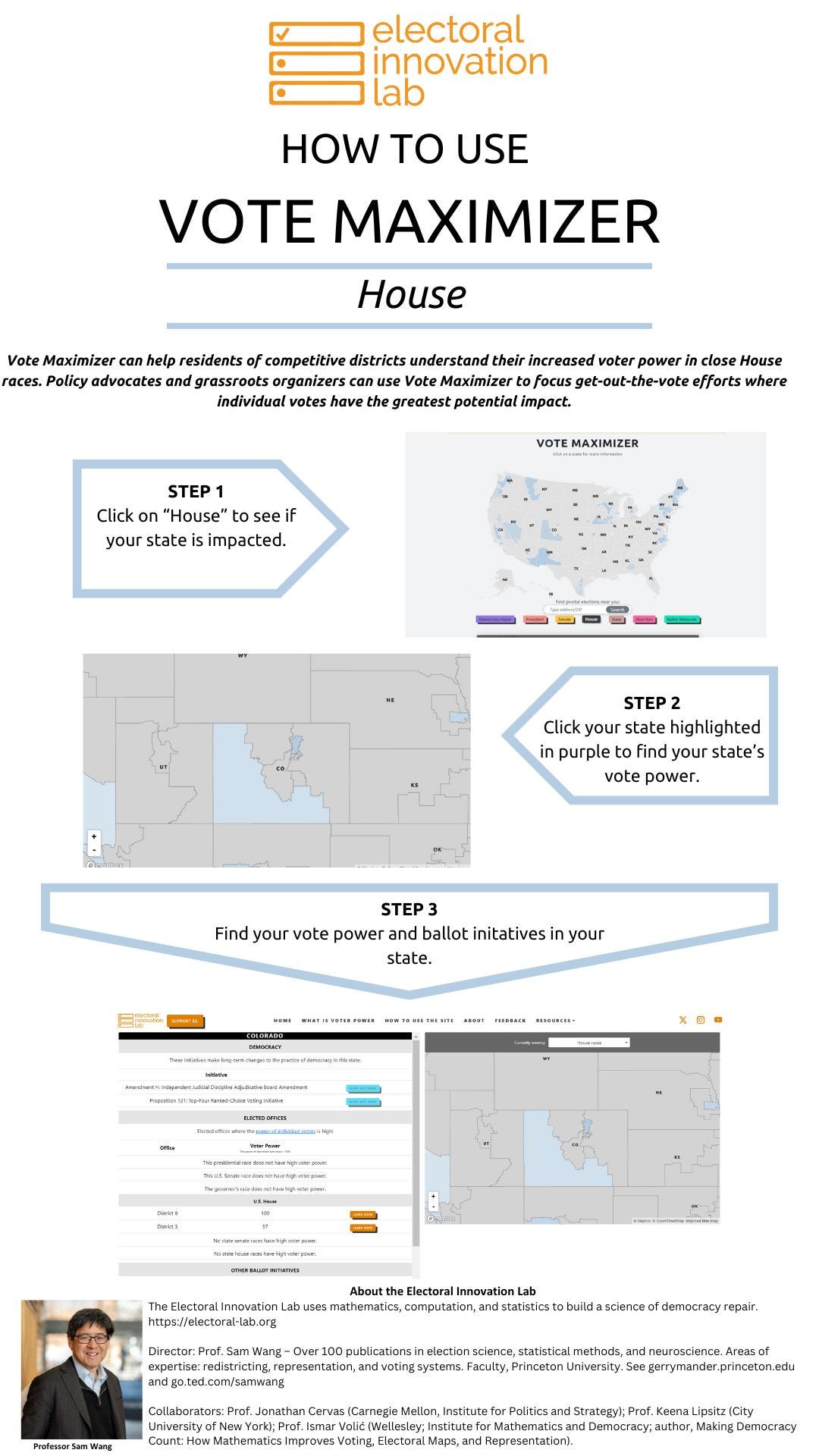Last-minute activities
Decision points, both national and local, for democracy. You probably have a role.
Voting ends Tuesday, which is the official Election Day for those who have not voted early. Some quick thoughts for your engagement.
Before I start: please don’t focus only on federal elections. Local power, which affects your life in real ways, is on the ballot everywhere. And voting rules - anti-gerrymandering, and ranked-choice voting - can shape your future for years to come.
Federal power: Presidency and House on a knife edge
The Presidency and control of the House are on a near-perfect knife edge. The Princeton Election Consortium’s statistical snapshot reveals that the Electoral College is within a fraction of a percentage point (measured in terms of popular vote) of a perfect toss-up, as is the House.
The uncertainty on both of these estimates is 1-2 points. Mathematically, this means that the outcome will almost certainly be less close. But we don’t know which way!
This weekend, use this uncertainty to get out the vote. Look up the swing House district nearest you, and get out the vote. (Here’s an example of NYC area opportunities to canvass in an optimized manner.)
Democracy itself is on the ballot, nationally and locally
The national election will shape the future of our democracy. Authoritarianism is a real threat.
One defense is to build a stronger democracy locally. All over the nation, voters have a chance to do that, by enacting voting rules that have the potential to reduce extremism.

The rules of voting - primaries, general elections, and redistricting - play a hidden role in nudging our politics. As Rick Pildes writes in the New York Times, voters all over the nation have a chance to enact rules to nudge us away from extremism and minority rule.
Anti-gerrymandering in Ohio: Issue 1
In Ohio, Issue 1 takes redistricting away from politicians and gives the job to a nonpartisan citizen commission. Like a jury, such a commission lacks conflict of interest and is tasked to render an unbiased outcome. Learn more about it from the Electoral Innovation Lab’s deep dive (1-pager of details here).
Ranked-choice voting and open primaries
In a strongly polarized electorate, “closed” party primaries that only allow members to vote create limited choices for the general election. Consequently voters are forced to choose among candidates who are far from their preferences. And with single-choice “bullet” voting, a determined faction can push through an extreme choice. Here’s a video explainer from me.
To solve the first problem, reformers in Nevada, Colorado, Idaho, and many other states (for all of them, see Vote Maximizer) may enact all-party primary where the top 4 or 5 winners advance to the general election. Then to solve the bullet-voting problem, voters get to rank the choices. Having just a few finalists makes it easier for voters to make an informed choice.
Support the Electoral Innovation Lab
If you found Vote Maximizer useful, please consider supporting the folks at the Electoral Innovation Lab. Their research drives advocacy against gerrymandering, research into voting rules, and citizen resources like Vote Maximizer. Reform will continue long after Tuesday’s election, and you can help move it forward.






